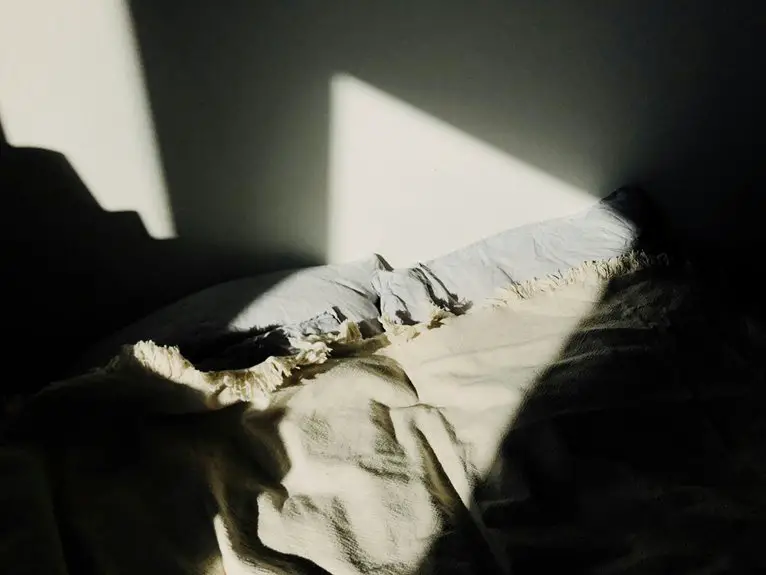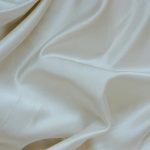You might have noticed old-fashioned percale sheets aren’t as popular as they once were. They’re still prized for their crisp, breathable feel and durability but got overshadowed by softer, wrinkle-resistant fabrics like sateen and microfiber as people wanted easier care and a silkier touch. Plus, advances in textile technology brought new, eco-friendly options with better moisture control. If you want to explore how bedding evolved and which sheets might suit you best, keep on exploring these changes.
Table of Contents
Key Takeaways
- Percale sheets, once standard, are prized for their crisp feel, breathability, and durability due to their tight one-over-one-under weave.
- Consumer preferences shifted toward softer, silkier fabrics like sateen and wrinkle-resistant, low-maintenance bedding alternatives.
- Advances in textile technology introduced blends and eco-friendly fabrics offering enhanced comfort, moisture-wicking, and sustainability.
- Percale remains popular for warm climates and those seeking breathable, long-lasting sheets, but faces competition from diverse modern materials.
- Choosing sheets now involves balancing thread count, fabric type, and care needs, with percale favored for its crispness and durability.
The Origins and Characteristics of Percale Sheets
Although percale sheets have been around for centuries, you mightn’t realize how their unique weave sets them apart. Percale features a tight, one-over-one-under weave, creating a matte finish and a crisp feel you can’t miss.
When you slip into percale sheets, you’ll notice their cool, breathable nature—perfect if you tend to overheat at night. They’re typically made from long-staple cotton, which adds durability and softness over time.
You’ll also appreciate how percale resists pilling and stays smooth after many washes. This weave’s simplicity gives the fabric a lightweight yet sturdy structure, making percale sheets ideal for warm climates or anyone who prefers a fresh, airy bed.
You’ll find percale’s classic texture distinct from silkier weaves like sateen.
Why Percale Sheets Became the Bedding Standard
Percale sheets gained widespread popularity because they strike the perfect balance between comfort and durability.
When you choose percale, you get a crisp, breathable fabric that keeps you cool without sacrificing strength. This makes percale ideal for everyday use and various climates.
You’ll appreciate how easily percale resists pilling and holds up after countless washes, meaning your sheets stay fresh longer.
Manufacturers and consumers alike favored percale because it offers consistent quality and a crisp feel that doesn’t get overly soft or limp.
Its straightforward weaving process also made production efficient, helping it become widely accessible.
Ultimately, percale’s blend of practicality and comfort made it the go-to bedding option, setting a standard many people still recognize today.
The Shift in Consumer Preferences Over Time
As lifestyles and tastes have evolved, so have the kinds of bedding people prefer. You’ve likely noticed that percale sheets aren’t the go-to choice they once were.
Your preferences may have shifted for several reasons:
- You seek softer, more luxurious textures.
- You want bedding that requires less ironing and care.
- You prefer materials that offer temperature regulation.
- You’re drawn to a wider variety of colors and patterns.
These changes reflect how you value comfort, convenience, and aesthetics in your bedroom.
While percale remains a classic, your evolving needs push you toward options that better suit modern living. Understanding this shift helps explain why old-fashioned percale sheets aren’t as dominant in your linen closet anymore.
Advances in Textile Technology and New Fabrics
When you explore modern bedding options, you’ll find that advances in textile technology have revolutionized both comfort and durability.
Manufacturers now use innovative weaving techniques and fiber treatments to create fabrics that resist wrinkles, stains, and wear. You’ll notice blends incorporating microfiber and performance fibers that wick moisture and regulate temperature, enhancing your sleep experience.
These fabrics often maintain softness after countless washes, unlike older materials that might degrade. You can also find eco-friendly options made from organic or recycled fibers, aligning with sustainable values without compromising quality.
As a result, your bedding feels fresher, lasts longer, and adapts to your lifestyle needs. These technological strides have transformed what you expect from sheets, making your choices more versatile and tailored than ever before.
The Rise of Sateen and Other Alternatives
Although you might be familiar with traditional cotton percale, sateen has rapidly gained popularity as a luxurious alternative that offers a smooth, silky feel. You’ll find sateen sheets appealing if you want softness paired with a subtle sheen.
Beyond sateen, bedding now includes various materials designed to enhance comfort and durability. Consider these popular alternatives:
- Linen: Breathable and moisture-wicking, perfect for warm climates.
- Bamboo: Eco-friendly, naturally antimicrobial, and silky smooth.
- Microfiber: Affordable, wrinkle-resistant, and easy to care for.
- Tencel: Made from eucalyptus fibers, it’s soft, breathable, and sustainable.
These options cater to different preferences, giving you more choices than ever before while moving away from the crisp, matte feel of classic percale.
How Percale Sheets Compare to Modern Bedding Materials
While percale sheets have long been celebrated for their crisp texture and durability, modern bedding materials offer a variety of benefits that might better suit your specific needs.
Percale’s matte finish and breathable weave keep you cool, but if you prefer a softer, silkier feel, sateen or microfiber might appeal more. Synthetic blends often resist wrinkles and stains better, requiring less upkeep.
Percale offers cool breathability, while sateen and microfiber provide softer, silkier comfort with easier maintenance.
Meanwhile, materials like bamboo bring moisture-wicking properties and a smooth touch, ideal if you tend to overheat at night.
However, percale’s strength and longevity still make it a reliable choice if you value traditional quality.
Ultimately, your choice depends on whether you prioritize crispness, softness, ease of care, or moisture management in your bedding experience.
Environmental and Sustainability Considerations in Bedding
Choosing bedding isn’t just about comfort and care anymore; it also involves considering the environmental impact of the materials you bring into your home.
You want sheets that not only feel good but also minimize harm to the planet. Here’s what to keep in mind when choosing sustainable bedding:
- Material Source: Opt for organic cotton, linen, or bamboo grown without harmful chemicals.
- Manufacturing Process: Look for brands that use eco-friendly dyes and reduce water consumption.
- Durability: Choose bedding that lasts longer to reduce waste and frequent replacements.
- Certifications: Check for certifications like GOTS or OEKO-TEX, which guarantee environmentally responsible production.
The Resurgence of Percale in Contemporary Bedding Trends
You’ll notice percale is making a strong comeback thanks to modern fabric innovations that boost its softness and durability.
It’s also a smart choice if you care about sustainability and eco-friendliness in your bedding.
Plus, today’s percale comes in stylish patterns and colors that fit any bedroom aesthetic.
Modern Fabric Innovations
Three key innovations have sparked a renewed interest in percale fabric, making it a favorite in modern bedding trends. You’ll find that today’s percale sheets blend classic crispness with new technology, enhancing comfort and durability.
Here’s what’s driving this evolution:
- Advanced Weaving Techniques – Improved looms produce finer, tighter weaves without sacrificing breathability.
- Enhanced Fiber Blends – Combining cotton with modal or Tencel boosts softness and moisture-wicking properties.
- Smart Finishes – Wrinkle-resistant and stain-repellent treatments keep sheets looking fresh longer.
- Color and Print Innovations – Digital printing offers vibrant, lasting designs that suit any style.
These modern fabric innovations mean percale isn’t just a nostalgic choice—it’s a smart, comfortable option for your bedding today.
Sustainability and Eco-Friendliness
As awareness about environmental impact grows, percale bedding has made a notable comeback by aligning with sustainability goals.
You’ll find that many manufacturers now use organic cotton for percale sheets, reducing harmful pesticides and conserving water.
Choosing percale means opting for a breathable, durable fabric that lasts longer, cutting down on waste from frequent replacements.
Plus, percale’s simple weave requires less energy to produce compared to more complex fabrics.
When you pick percale sheets certified by organizations like GOTS or OEKO-TEX, you guarantee they’re free from toxic chemicals, making them safer for you and the planet.
Stylish Patterns and Colors
While percale’s reputation has long centered on its crisp, breathable texture, its revival also brings a fresh wave of stylish patterns and colors to contemporary bedding.
You’ll find that today’s percale sheets aren’t just about feel—they’re about making a statement. Designers have embraced bold prints and subtle hues alike, giving you plenty of options to match your bedroom’s vibe.
Here’s why you should consider percale for style and comfort:
- Classic stripes and checks bring timeless charm to any decor.
- Floral and botanical patterns add a touch of nature indoors.
- Rich jewel tones offer a luxurious, modern feel.
- Soft pastels create a calm, inviting atmosphere.
With these choices, you can easily refresh your space while enjoying percale’s signature crispness.
Tips for Choosing the Right Sheets for Your Sleep Needs
When choosing sheets, understanding fabric types can make all the difference in your comfort.
You’ll also want to take into account thread count, but don’t get caught up in the highest numbers alone.
Let’s explore how these factors impact your sleep quality.
Fabric Types Overview
Choosing the right fabric for your sheets can make all the difference in how well you sleep.
Different materials offer unique feels and benefits, so knowing your options helps you pick what suits you best.
Here are four common fabric types to take into account:
- Percale – Crisp and cool, perfect if you like a lightweight, breathable sheet.
- Sateen – Smooth and silky with a slight sheen, great for a luxurious feel.
- Linen – Durable and moisture-wicking, ideal if you often feel hot at night.
- Cotton-Polyester Blend – Wrinkle-resistant and affordable, but less breathable than natural fibers.
Understanding these fabrics guarantees you choose sheets that match your comfort and sleeping style.
Thread Count Considerations
Fabric type plays a big role in your sheets’ comfort, but thread count also impacts how soft and durable they feel.
Thread count refers to the number of threads woven into one square inch of fabric. While higher thread counts often mean softer sheets, extremely high counts can make sheets heavy and less breathable.
You’ll find quality percale sheets usually range from 200 to 400 thread counts—enough for crispness without sacrificing airflow.
When choosing sheets, focus on a balanced thread count that suits your climate and sleep style. If you tend to sleep hot, opt for a lower thread count to stay cool. For a cozier feel, a slightly higher count might work better.
Frequently Asked Questions
How Do You Properly Care for and Wash Percale Sheets?
You should wash percale sheets in cold or warm water with a gentle detergent. Avoid bleach, dry on low heat, and remove promptly to prevent wrinkles. Iron if needed to keep their crisp, smooth texture intact.
Are Percale Sheets Suitable for People With Allergies?
Like finding a fresh breeze on a spring morning, you’ll appreciate percale sheets if you have allergies. Their tightly woven cotton resists dust mites and allergens, helping you sleep comfortably without irritation or sneezing.
What Thread Count Is Ideal for Percale Sheets?
You’ll want percale sheets with a thread count between 200 and 400. This range keeps them crisp and breathable without feeling heavy, giving you that classic, cool, and comfortable percale texture you’ll love.
Can Percale Sheets Be Used Year-Round?
Think of percale sheets as your all-season friend—they’re crisp and breathable, keeping you cool in summer and cozy with layers in winter. You can definitely use them year-round without breaking a sweat or overheating.
Do Percale Sheets Shrink After Washing?
Yes, percale sheets can shrink after washing, especially if you use hot water or high heat in the dryer. To keep them fitting well, wash in cold water and tumble dry low or air dry.
- What Kind of Fabric Is Percale? An Easy-to-Understand Guide - July 15, 2025
- What Is “Washed Percale”? Your Guide to This Soft Finish - July 15, 2025
- What Is “Long-Staple Cotton Percale”? A Sign of Quality - July 15, 2025







